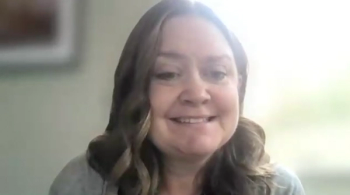
Schizophrenia Disease State Overview
John J. Miller, MD, and Nev Jones, PhD, open a discussion providing an overview on the current state of patients with schizophrenia.
Episodes in this series

John J. Miller, MD: Hello and welcome to this AJMC® Peer Exchange program titled, “Managing Patients with Schizophrenia: Provider and Payer Considerations." My name is John J. Miller, MD. I work as the medical director of Brain Health and editor-in-chief of Psychiatric Times®. I also work at our Seacoast Mental Health Center in [Exeter], New Hampshire.
Joining me today in this discussion are my colleagues, Nev Jones, PhD, assistant professor, School of Social Work at the University of Pittsburgh [in Pennsylvania]; Caroline P. Carney, MD, president of Magellan Behavioral Health, and the chief medical officer at Magellan Health [in Phoenix, Arizona]; Sandy Dimiterchik, director of community engagement at the Schizophrenia & Psychosis Action Alliance [in Lafayette, Louisiana]; and Carlos Larrauri, Psych APRN and JD/MPA candidate at the University of Michigan Law School and Harvard Kennedy School [in Miami, Florida].
Today, we’re going to talk about several topics, including an overview of schizophrenia, the standard of care and treatment landscape of schizophrenia, and managed care considerations for patients with schizophrenia. Let us get started. Our objective is to provide a brief overview of schizophrenia, including the 3 domain symptoms that present, and explore the effect of social determinants of health on the condition.
Briefly, if we look at schizophrenia as a disorder, it has a complex, somewhat confusing story that is still very much in evolution. Prior to 1954, it was commonly called dementia praecox. The most common reason people were institutionalized was because of cognitive impairments, hence dementia, and praecox, early onset. At that time, we had no treatments for any of the 3 domains, one of them being cognitive, which is self-explanatory. Another domain, negative, includes symptoms such as low motivation, social withdrawal, limited or inappropriate affect, and overall disinterest. And the final cluster, what we call the positive symptoms, commonly includes hallucinations and/or delusions and/or disorganization.
In 1954, chlorpromazine was FDA approved as our first drug to target positive symptoms. The benefit of that was it resulted in a large deinstitutionalization of patients. From 1954 up to the present time, there’s been a steady evolution of novel agents trying to improve efficacy and minimize adverse effects. We’ve certainly made some progress, but have a long way to go. Alongside that, we’ve become more adept and mindful of the need to aggressively intervene to help with the negative and the cognitive symptoms. An example of that is the RAISE study, which I would recommend reviewing if you’re interested. It’s an acronym for recovery after initial schizophrenic episode.
Dr Jones, over the past 50 years, how have the outcomes been and how can we improve on them moving forward?
Nev Jones, PhD: To set the stage for those listening, probably everybody in the audience is familiar with deinstitutionalization in a big-picture sense. Between approximately the mid-1950s and early 1990s, there were major shifts in the United States and other countries in terms of treating individuals with what we would generally refer to as serious mental illness in institutional settings, predominantly state hospitals, and moving to community-based services and community-based treatment. As folks were shifted out of the hospitals, the provider practice and policy community rallied around developing intervention strategies and supports that would enable people to live in the community. Some are on the more intense side like residential group homes, but also a community treatment. Then for people who didn’t necessarily have that level of service needs, more limited services. In terms of the overall picture, I think a lot of what we’ve seen is people with more significant long-term disability stemming from schizophrenia and other serious mental illnesses ending up disproportionately on the streets, incarcerated, and unemployed, so living in poverty.
I think a lot of the recovery movement in community mental health as well as psychiatric rehabilitation have been oriented toward that bigger picture of how we take folks and support them so they do not end up incarcerated, on the streets, etc. I think we have been steadily working on psychosocial intervention treatments since before the early 1990s, but the heyday of a lot of psych [psychiatric] rehab development was in the 1990s. Some of the barriers to implementing those programs are funding, so basic policy barriers, lack of available funding at the state level and the resources that would be needed, as well as real workforce problems. Those workforce problems, as I’m sure many folks in the audience know, have become much more pronounced since COVID-19. Even in a state that may have the money for a particular community mental health service, they may not be able to fully staff that. We see that happening all around.
I think when it comes to thinking about outcomes, there is this big-picture policy landscape that we have to be thinking about, as well as what has happened in the wake of deinstitutionalization. Outcomes remain, if we look at the research literature on schizophrenia, outcomes have not improved over the last 30 or 40 years. There’s some improvement for first-episode, single-episode individuals, but not for multi-episode psychosis. So definitely, while we continue to learn things, we have a long way to go. I would suggest that requires a lot of creativity, multidisciplinary thinking, and digging deep into issues that would be tied to continuing to transform outcomes.
John J. Miller, MD: Thank you for that comprehensive overview.
Transcript edited for clarity.
Newsletter
Stay ahead of policy, cost, and value—subscribe to AJMC for expert insights at the intersection of clinical care and health economics.















































